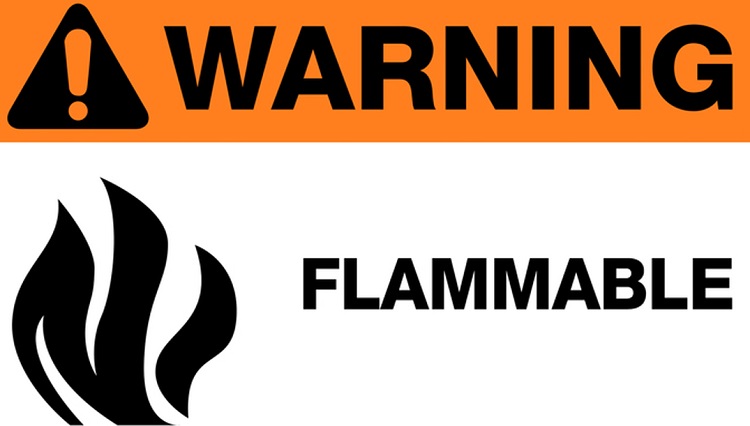Purpose: To control and provide guidance for the management of flammable liquids which are increasingly being used on construction sites.
Definitions and Abbreviations
Flammable Liquids: Defined as those that have a flash point of less than 32°C and supporting combustion at 50°C. Flammable liquids are found in increasing quantities on construction sites; being used as solvents, in the composition of adhesives, finishing products and other materials.
MSDS: Material Safety Data Sheet which, in part, contains the chemical composition, safe storage, handling, disposal and fist aid treatment. An MSDS must be on site for each flammable liquid.
Procedure to Handle Flammable Liquids
Hazard Identification and Risk Assessment
When these liquids are exposed to the atmosphere they give off vapors, which are both flammable and toxic. They are also generally heavier than air and therefore difficult to disperse. The precautions necessary are therefore designed to prevent accidental ignition or explosion of the materials and the accidental inhalation of the vapors. Non-toxic and non-flammable substitute materials should be used whenever possible.
Control Measures
a) All containers should be clearly marked HIGHLY FLAMMABLE or FLASH POINT BELOW 32˚C and should be stored in the open but protected from direct sunlight in a well-ventilated area. Where total quantity is 50 liters or less it may be contained in sealed vessels in a suitably enclosed fire resistant cupboard or storeroom. The cupboard or storeroom should be clearly marked as containing “Highly Flammable” substances.
b) Petrol should be stored at least 6m away any building preferably in open air or have direct access to open air.
c) If bulk storage is planned the local Fire Prevention Officer should be consulted for advice on a Petroleum License.
d) Highly flammable liquids should be carried in containers, which do not permit spillage and the contents must be marked clearly on the outside.
e) Where any container is found to be leaking or liable to leak or spill, it should be taken to a safe place and drained into another container.
f) All tanks of highly flammable liquid, which are not fixed tanks, should, when empty, be removed to a safe place in the open air or to a properly fire resistant storeroom or cupboard.
g) Where vapor may be expected to be present no ignition source should be allowed.
h) Smoking should not be permitted where highly flammable liquids are present and a notice should be displayed to this effect.
i) The filling of machines should always be done in either the open air, or well ventilated areas.
j) In all places where highly flammable liquids are present there should be suitable fire extinguishers present (not water).
k) Any contaminated waste, which renders it liable to spontaneous combustion or ignition, should immediately be deposited in a metal container with a lid, or removed to a safe place.
l) Waste highly flammable liquid should be disposed of in a safe manner under the control of a competent appointed person. It should not be disposed of by burning. Advice on disposal may be obtained from the Project HSE Manager.
m) Any person handling highly flammable liquids should wear correct personal protective equipment such as impervious apron, gloves, eye protection and safety footwear. Any contaminated personal protective equipment should be treated the same as contaminated waste.
n) Containers of highly flammable liquids should never be left out on site, they should be controlled by a competent person, safe and secure at all times.
o) Persons using or handling Highly Flammables Liquids should be provided with suitable hazard information on the substance and be trained in its safe use and storage.
p) Total Bulk Being Stored needs to be Monitored.
Safety Checklist for Flammable Chemicals/ Liquids Handling
- Storage area safe and secure.
- Clear and bold signs on containers, cupboards and storerooms.
- Suitable sufficient fire extinguishers (not water).
- Safe from probable sources of ignition.
- Appointed person for control of substances.
- Information, training and hazard information to persons handling highly flammable liquids.
- COSHH Sheets at storage places and discharge points.
- Correct personal protective equipment.
